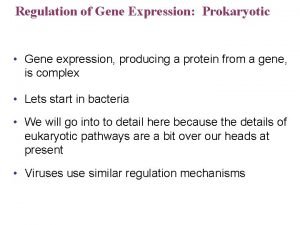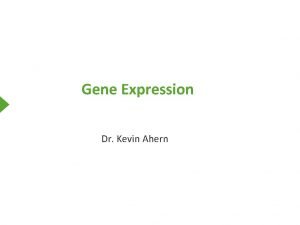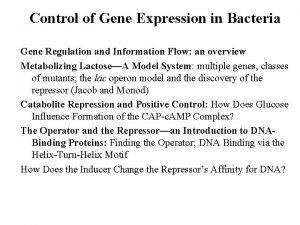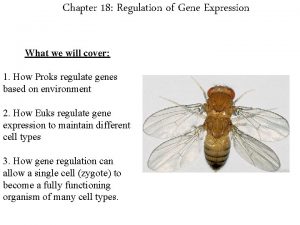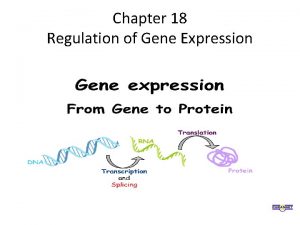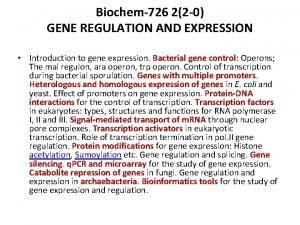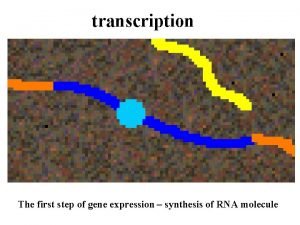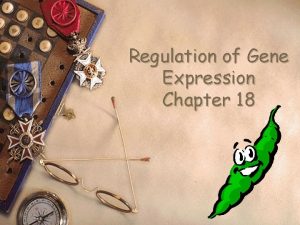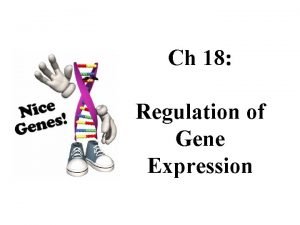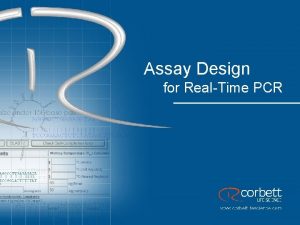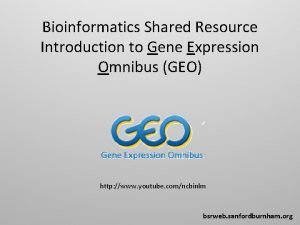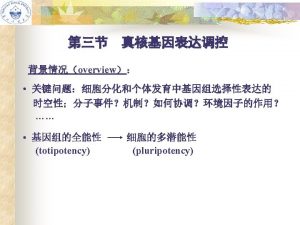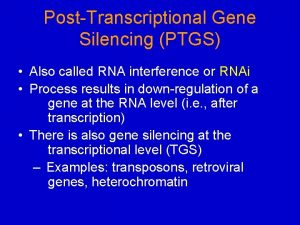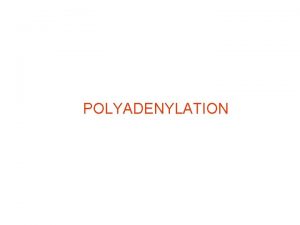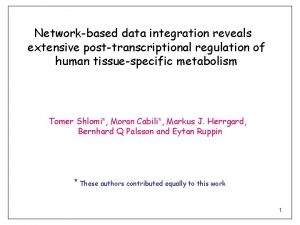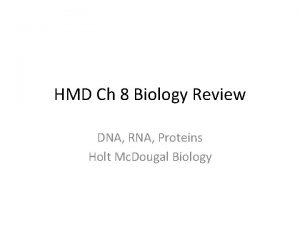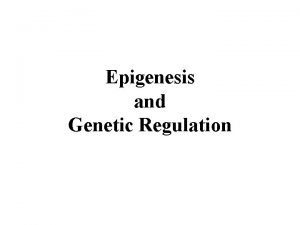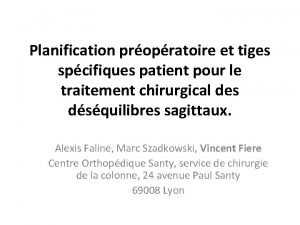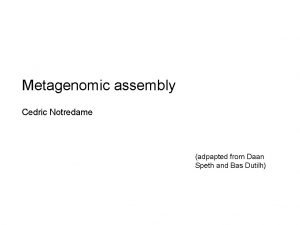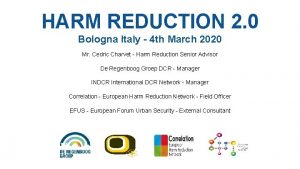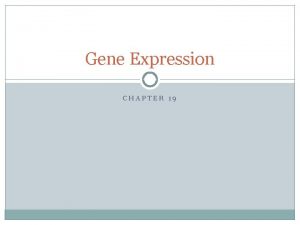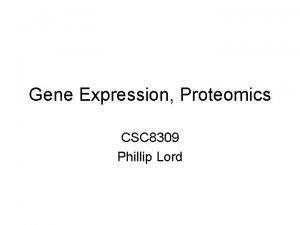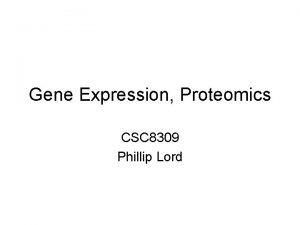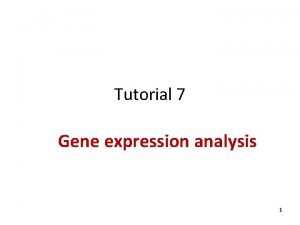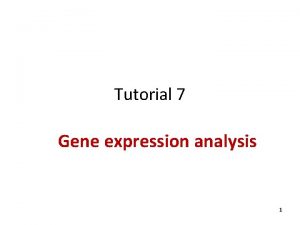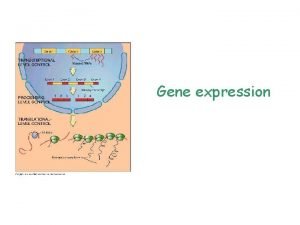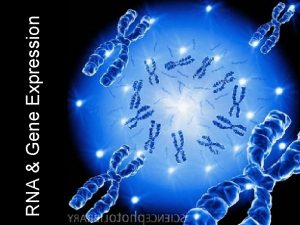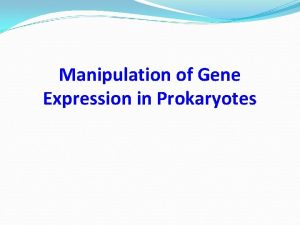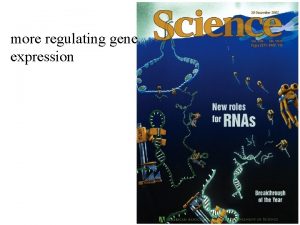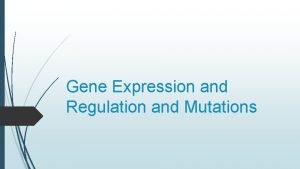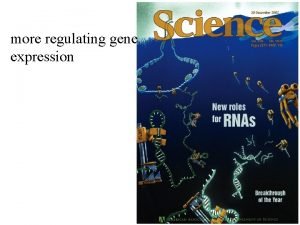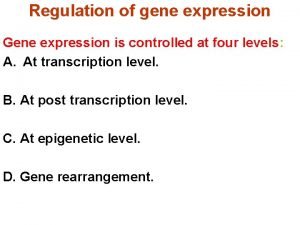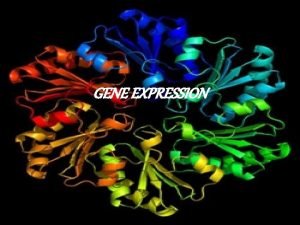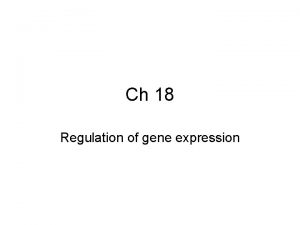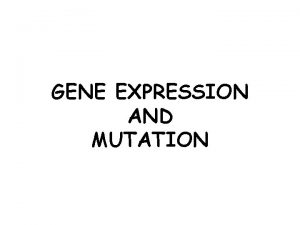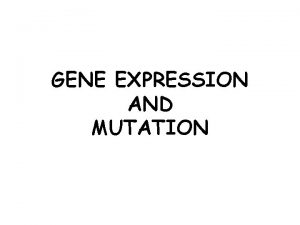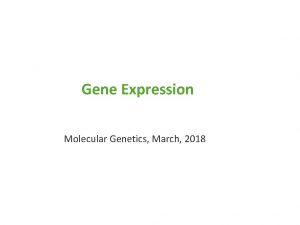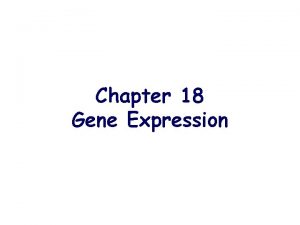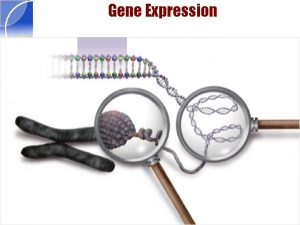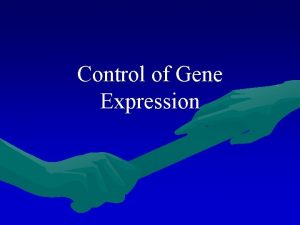Introduction to Gene Expression Analysis Phillip Lord Cedric

























- Slides: 25

Introduction to Gene Expression Analysis Phillip Lord & Cedric Simillion

Resources http: //www. ebi. ac. uk/microarray/biology_intro. html http: //www. mged. org/ http: //www. tigr. org/tdb/microarray/ Microarray Bioinformatics Dov Stekel Product Details: Paperback 280 pages (September 8, 2003) Publisher: Cambridge University Press Language: English ISBN: 052152587 X

How do we measure gene expression? • Oldest technique is to look at a phenotype. • In this case, the ura 4+ gene from S. pombe • Most other techniques based on hybridisation. – Northern Blot – Quantative RT-PCR

Microarray analysis • Whole genome sequencing makes it possible to predict the entire gene complement • Various technologies have built on this knowledge to produce systems that will monitor the expression (usually transcription) at the whole genome level – Measurement of global transcription is called transcriptomics • Come by a variety of names – gene chips, arrays, DNA arrays. Can be somewhat confusing what is actually being described. • Not to be confused with Genotyping Microarrays

Generating Microarrays • There are many different systems for generating microarrays – spotting • original technology, now rather old • good for “one off” arrays – in-situ synthesis • newer, more reproducible • expensive first time around, then cheaper

Spotting • Synthesize DNA, spot onto glass slides, fix. A Spotting Robot The head A Spotting Pin taken from Stekel, 2003

In-situ synthesis • • Uses chemically protected nucleotides Specific spots are “de-protected” Can then extend these oligos Different techniques for deprotection

Masked Synthesis • Uses masks much like silicon chip production • Masks are expensive • Good for bulk production, standard arrays

Photo deprotection • A light source is used to deprotect oligos • Essentially, this is much the same as an LCD projector. from Stekel, 2003

Ink. Jet Synthesis • An Ink. Jet head is used to place nucleotides at the appropriate place on the array

An experiment RT with Cy 3 d. CTP Two Samples Combine into single sample RT with Cy 5 d. CTP Hybridise to Microarray

Hybridisation from Stekel, 2003

Detection • Finally, the hybridisation extract must be detected • The technology is related to desktop scanners, but more sensitive. • Usually produces a TIFF file from Stekel, 2003

The end result from Stekel, 2003

Problems • We are looking for variability between the expression of different genes. • There are many (many!) other sources of variability • Most microarray analysis is about trying to normalise these sources of variability, leaving biological variability

Artifacts The Jolly Green Giant The Yellow Splodge Peril Space Invaders

Solutions • Removing Sections • Background Subtraction • Start Again

Feature Recognition • Not all spots are equal – different sizes, different shapes. • Identifying the exact scope of the spot on an array can therefore be hard. • Often solved in the initial detection of spots.

Spot Detection The Doughnut A general disaster The basic solution to this is to not use circular spots for detection. There a variety of edge detection algorithms, or manual tools which work.

An experiment RT with Cy 3 d. CTP Two Samples Combine into single sample RT with Cy 5 d. CTP Hybridise to Microarray

Channel Variability • Cy 3/Cy 5 dyes have different properties. • So do the lasers at different frequencies. • So do the photomultipliers which detect them.

Within Slide Variability • Slides often have imperfections, either from spots, or background • Gaps are not uncommon, neither are chromatic effects

Inslide Normalisation

Between slide variability • Results between different slides are not directly comparable. • Results between different experiments are not directly comparable.

Further work • Please read • Cho RJ, Campbell MJ, Winzeler EA, Steinmetz L, Conway A, Wodicka L, Wolfsberg TG, Gabrielian AE, Landsman D, Lockhart DJ, Davis RW "A genome-wide transcriptional analysis of the mitotic cell cycle. " Mol Cell. 1998; 2: 1: 65 -73 .
 Protein power point
Protein power point Lord cedric
Lord cedric Gene by gene test results
Gene by gene test results Operon lac
Operon lac Gene expression:
Gene expression: Regulation of gene expression in bacteria
Regulation of gene expression in bacteria Chapter 18 regulation of gene expression
Chapter 18 regulation of gene expression Chapter 18 regulation of gene expression
Chapter 18 regulation of gene expression Regulation of gene expression
Regulation of gene expression טרנסלציה
טרנסלציה Chapter 18 regulation of gene expression
Chapter 18 regulation of gene expression Genetic effects on gene expression across human tissues
Genetic effects on gene expression across human tissues Positive vs negative gene regulation
Positive vs negative gene regulation Chapter 18 regulation of gene expression
Chapter 18 regulation of gene expression Fret assay
Fret assay Gene expression omnibus tutorial
Gene expression omnibus tutorial Gene expression
Gene expression Gene expression
Gene expression Gene expression
Gene expression Gene expression
Gene expression Gene expression in prokaryotes and eukaryotes
Gene expression in prokaryotes and eukaryotes Cells must control gene expression so that __________.
Cells must control gene expression so that __________. Lyonization of gene expression
Lyonization of gene expression Cédric barrey âge
Cédric barrey âge Cedric notredame
Cedric notredame Cedric charvet
Cedric charvet



